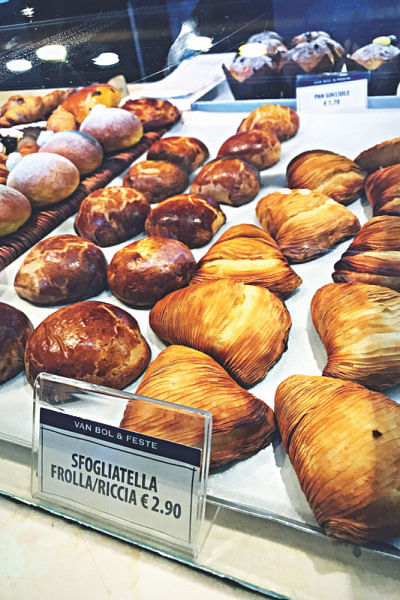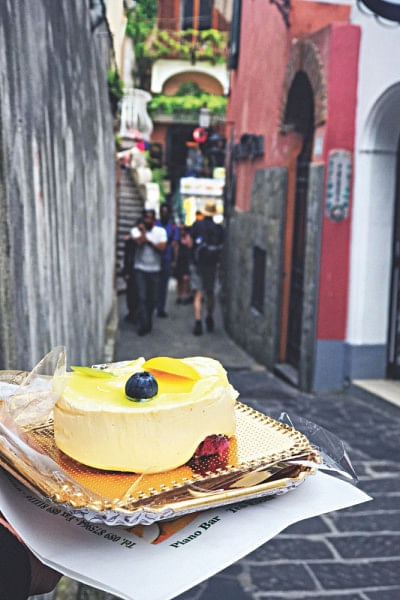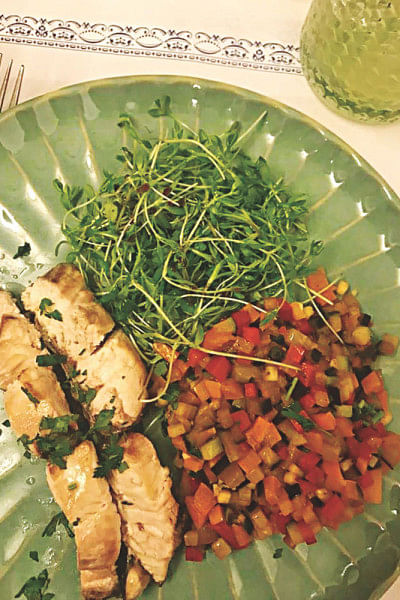Gustatory tourism

Call it 'Travelling for Food' or 'Culinary Tourism,' the meaning remains the same. Kashtan Habib, an advertising personnel, who loves food and travelling, weighs in on this by saying, "I guess these are all different terms for the same concept - food travel. Don't think there's any difference in them." Sharmin Rahman, AVP-Creative at Asiatic JWT and fashion designer by hobby, compares it to regular tourism and mentions, "People who love to travel, want and expect different things from their tours; some expect relaxation, some want to see scenic places, some succumb to sights of historic importance, some seek entertainment and some people love to indulge in food. Some travellers want a combination of all or a few from the list and some travel only for food – the last type of tourism is gastronomic tourism I believe, in which case the sole purpose of travelling is to taste food from a particular geographical destination."
Travelling for the sake of the food does not require an acquired taste, no pun intended! It comes seamlessly to those seeking it, but does it negate the other aspects of visiting a foreign land? To answer that very question, Rahman had this to say- "I'd definitely want my travel destination to offer me with an array of great tasting food; local, foreign, versatile in nature, fine dining, street food, fusion – all sorts, as my tour would be incomplete without tasting local food or experiencing a few great dinners, but I don't think I will plan a trip just for food in near the future!"

Habib too shares the same opinion, "It's not like I will go to a foreign country just for the food. Food comes as it is, as part of the whole experience. But I have taken many 'food tours' in various cities I have visited as that give you an idea of the people there, their lifestyle etc. I've always been curious about San Sebastian in Spain, a place with the most number of Michelin Stars in one city. But I'd never go to Spain only to visit San Sebastian. I went to San Sebastian as a part of my whole Spain trip."
Since we are talking food as the sole purpose of tourism, Habib gives a concise glimpse of his tours- "I have done many food tours in cities like Bangkok, Mumbai, Paris, Madrid to San Sebastian. What's beautiful with such tours is that the tour group, consisting of complete strangers, walking, and eating through a city for 2-3 hours, create a momentary bond. We taste the food, criticising some and loving others, we share each other's backgrounds, cultures, food habits. The tour not only opens up the culture and legacy of the locality, but also of the tourists themselves. Then, after the 3 hour trip, we become strangers again, going on to our next ventures. At times, we do bump into each other again, and share a familiar hello. It's a bittersweet experience and is always memorable."
Gastronomic tourism does not always have to mean getting a passport and hopping on a plane. Your neighbourhood food cart can draw in people from a different district, if fame reaches that far! Habib comments on this, saying, "... it's not just about international food.

International food destinations aside, Dhaka itself is now a melting pot of many delicacies which can easily have their place as an attraction. Sharmin Rahman offered her two cents in this, saying, "I think Dhaka has to offer a wide range of street food; if we could manage the hygiene factor and provide some innovative way to deal with our usual humid weather, Dhaka's fuchka-chotpoti, chitoi and bhapa pitha in winter, and daalpuri-shingara all have the potential to be part of an exotic walking tour of Dhaka. In it, tourists can be shown the people of the city, its important spots and how street food is a part of everyday life. All the biriyani and tehari places can be included with tours of the sights of historical importance and how each has been a part of our culture. Old Dhaka, with all its delicacies, could be a separate food tour all together, which can't be found anywhere else. Dhaka's oriental food scene is great too in my opinion; Japanese, Cantonese, Mandarin, Korean, Chinese, Thai – you name it, you have it, and most of them are fairly good quality too. This has a great potential to attract Asian tourists for tourism in general, and can act as a refreshing palate changer from all our spiced up local food."
Rahman also shares her optimism for Bangladeshi local cuisine as a tourism attraction. "Even though we are a small country, we are blessed with diversity of land and people. Hence our culture is diverse and multidimensional, comprising of various kinds of lifestyle. And this has enriched our culture with various kinds of food. Each locality has a different kind of cuisine to offer, different in cooking method and type of ingredients, and needless to say, different in taste," she says.
Rahman goes on to create a compilation of all the gustatory attractions, saying, "Food from meat loving Chittagong is completely different from Sylhet as both regions have a great number local food which are a celebration of gastronomy. Be it Mezbaan, Khaishsha (beans and fish curry) from Chittagong or Chunga (sticky rice cooked in bamboo), Shatkora gosh (beef cooked with citrus fruit, grown only in that region), or Shutki Shira (soup-like dried fish curry) from Sylhet. The Chittagong Hill Tracts have an array of tribal food; simple in terms of cooking techniques, but completely different in types of produce and protein. Tribal food is as yet an undiscovered gem in our country. Moving slightly west along the coastline, dried fish, coconut, fresh fish – all are present in the local food with a completely different take, celebrating each ingredient that a particular locality has to offer. In the north however, ingredients and way of eating is different altogether. Kalai Ruti (mix lentil flour chapati), Daaler Bori (dried lentil dumplings) are all delicacies from the north, particularly Rajshahi.
All these delicacies come with great sight-seeing opportunities; our beautiful beach, the mangrove forest, hill tracts, lakes, rivers, green landscape, historical sites and monuments – everything is associated with the food that each location has to offer. Our cooking technique is ingenuous, requiring skill and experience; we use fresh ingredients the way it comes from nature, but in most recipes, cook it twice. Our food is honest and humble as we don't use additional garnishing or fancy plating, it tends to speaks for itself. We use multiple types of spices, but keep things simple. Authentic Bengali food is not likely to be found in any other region and the world should have a taste of it.
With proper management, exposure and marketing, it is safe to say that our food scene, with all its diversity and simplicity, presents a great tourism opportunity."
The late celebrity chef and TV show host Anthony Bourdain once said in his "Ode to Old Manhattan"- "There is better French food in New York these days than that they're serving at Le Veau d'Or." But that does not mean you have to stop yourself from the opportunity to taste the most authentic spaghetti while visiting Sicily!
Food is perhaps the most unifying factor of the modern traveller. It embodies the best of chances and sometimes, a slight upset on the culinary track! In that sense, gustatory tourism truly makes way for a moveable feast- all that is left for the traveller is to pick his or her path of cuisine for savoury serendipity.
Photo: Emran Khan





Comments